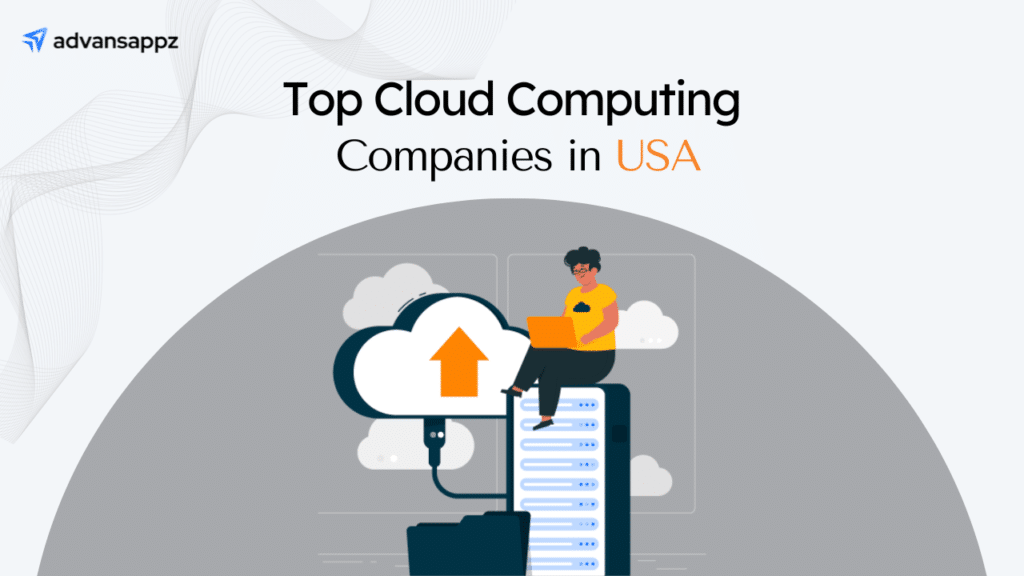Cloud computing has become a vital technology for businesses today. With its scalability, flexibility, and cost-effectiveness, it has revolutionized the way organizations operate. However, despite its numerous benefits, there are several cloud computing challenges that businesses need to address to maximize its potential.
In this article, we will discuss what cloud computing is and the twelve cloud computing challenges that businesses face along with ways to overcome them.
What is cloud computing?
Cloud computing is the delivery of computing services, including servers, storage, databases, software, and analytics, over the internet or “the cloud.” With cloud consulting services, businesses can access and use these computing resources on demand, without the need to invest in or maintain their own computing infrastructure.
The three primary categories of cloud computing services are:
Infrastructure as a Service (IaaS): It provides businesses with access to virtualized computing resources, including servers, storage, and networking.
Platform as a Service (PaaS): A platform businesses can use for building, testing, and deploying applications.
Software as a Service (SaaS): It enables businesses to access software applications hosted and managed by a cloud provider.
Cloud computing has transformed the way businesses manage their IT infrastructure and services. It enables businesses to scale their infrastructure and services up or down based on their changing needs and provides greater flexibility, efficiency, and cost savings.
Now that you know what cloud computing is, let us discuss some challenges that businesses might face while migrating to a cloud platform.
12 cloud computing challenges and how to address them
1. Security Concerns
Challenge: Storing sensitive data on a third-party server raises security concerns as companies lose control over the physical security of their data. Moreover, cloud providers have access to the data, which raises concerns about data privacy and security breaches.
Solution: To mitigate these risks, businesses must choose a cloud consulting service provider with robust security measures. The provider should have strict security protocols, regular security audits, and the latest security technologies to prevent unauthorized access and data breaches. Additionally, businesses must take steps to secure their data, such as encrypting data at rest and in transit and implementing multi-factor authentication.
2. Compliance and Regulatory Issues
Challenge: Businesses must comply with industry-specific regulations, such as HIPAA for healthcare, PCI DSS for payment card processing, and GDPR for data privacy. Cloud computing can create compliance and regulatory issues if the cloud provider does not comply with the regulations.
Solution: One way for businesses to address this concern is by selecting a cloud service provider that adheres to the applicable regulations. It is essential that the provider possesses certifications and follows compliance frameworks that align with the industry-specific regulations of the business. Furthermore, businesses need to confirm that their data is stored in a geographically suitable location to comply with data privacy laws.
3. Vendor Lock-In
Challenge: Businesses become dependent on the cloud provider’s infrastructure and services, making switching to a different provider challenging. The lack of standardization in cloud services makes it difficult to migrate from one provider to another.
Solution: To prevent becoming locked into a single vendor, businesses should opt for a cloud service provider that employs open standards and supplies standard APIs. This approach will enable businesses to migrate to another provider without incurring significant disruptions. In addition, businesses must factor in the expenses associated with changing providers when selecting a cloud provider.
4. Integration with Legacy Systems
Challenge: Integrating cloud services with legacy systems can be challenging, especially if the legacy systems were not designed for cloud computing. The lack of compatibility between cloud services and legacy systems can create data silos, making it difficult to access and use data across the organization.
Solution: To overcome this obstacle, businesses must devise an integration strategy that accounts for the compatibility between cloud services and their legacy systems. The integration strategy should prioritize the creation of APIs and connectors that enable the smooth incorporation of cloud services with legacy systems. Furthermore, when selecting a cloud provider, businesses should assess the expenses associated with integrating cloud services with legacy systems.
5. Performance and Reliability
Challenge: Downtime or slow performance can impact business operations, customer satisfaction, and revenue.
Solution: To guarantee the dependability and efficacy of cloud services, businesses must select a cloud service provider that provides a Service Level Agreement (SLA) with confirmed uptime and response time. The provider should have contingency and failover systems in place to ensure maximum availability. Furthermore, businesses should consistently monitor the performance and availability of cloud services to identify and remedy issues promptly.
6. Data Migration
Challenge: Migrating data to the cloud can be a time-consuming and complex process, especially for businesses with large amounts of data. Planning and executing the migration process with great care is necessary to minimize downtime and data loss.
Solution: Businesses must develop a data migration strategy that considers the size and complexity of their data. The strategy should include data mapping, testing, and validation to ensure a smooth migration process. Additionally, businesses must ensure that their cloud provider has the necessary tools and expertise to support the data migration process.
7. Lack of Control
Challenge: Moving to the cloud means businesses must relinquish some control over their infrastructure and services. This lack of control can make managing and monitoring cloud services challenging.
Solution: In order to tackle this challenge, companies need to establish unambiguous communication and define expectations with their cloud service provider. The provider should offer adequate transparency and authority over the infrastructure and services, enabling businesses to monitor and administer their cloud services efficiently. Additionally, companies should set up a governance framework that outlines the roles, responsibilities, and procedures for overseeing their cloud services.
8. Training and Skill Gaps
Challenge: Another cloud computing challenge is that it requires specialized skills and expertise that may not be available in-house. Businesses must ensure that their IT staff has the necessary training and skills to manage and monitor cloud services effectively.
Solution: To address this challenge, businesses must provide training and development opportunities to their IT staff to acquire the necessary cloud computing skills. Additionally, businesses can leverage managed service providers or cloud consultants to fill any skill gaps and provide ongoing support and expertise.
9. Network Connectivity
Challenge: Finding a reliable and high-speed network connection to ensure optimal performance and availability is a prominent cloud computing challenge. Businesses must ensure that their network infrastructure can support cloud services and provide adequate bandwidth.
Solution: Businesses need to assess their network infrastructure and bandwidth needs before making a move to the cloud. This evaluation should encompass the implementation of redundancy and failover mechanisms within the network infrastructure to ensure that high availability is maintained. Moreover, it is imperative for businesses to collaborate with their cloud provider to enhance network connectivity and optimize overall network performance.
10. Service Outages
Challenge: Cloud providers can experience service outages due to various reasons such as hardware failure, network issues, or natural disasters. Service outages can disrupt business operations and impact customer satisfaction.
Solution: To ensure continuity of their operations, businesses must choose a cloud provider that has a proven history of maintaining high availability and swift recovery from service outages. The provider should have robust redundancy and disaster recovery mechanisms in place to reduce the risk of downtime and data loss. Moreover, businesses need to establish a contingency plan that enables them to manage service outages effectively and minimize their impact on daily operations.
11. Governance and Compliance
Challenge: Cloud computing can create governance and compliance challenges as businesses must comply with regulations and internal policies that govern data security, privacy, and management.
Solution: To effectively manage their cloud services and data, businesses need to create a governance framework that outlines clear policies, procedures, and controls. The framework should align with industry-specific regulations and internal policies to ensure that business operations remain compliant. In addition to this, businesses must collaborate with their cloud provider to ensure adherence to regulatory requirements and industry standards. This collaboration will enable businesses to achieve a higher level of regulatory compliance, mitigate risks, and enhance their overall security posture.
12. Scalability and Flexibility
Challenge: Cloud computing provides scalability and flexibility, enabling businesses to scale their infrastructure and services up or down based on their changing needs. However, managing and optimizing cloud resources can be challenging, especially for businesses with dynamic workloads.
Solution: To maximize the benefits of cloud technology, businesses must develop a comprehensive cloud resource management strategy that considers their workload patterns and business requirements. The strategy should concentrate on optimizing resource utilization, reducing waste, and controlling costs. To achieve these goals, businesses can take advantage of cloud automation tools and ai based consulting services that can simplify and streamline resource management processes. The automation of routine tasks can enhance efficiency, diminish errors, and boost overall performance in businesses.
Also Check: Cloud computing trends in 2023
Conclusion
While cloud computing offers numerous benefits to businesses, it also poses several cloud computing challenges. By carefully evaluating their needs, establishing governance frameworks, providing training, and working closely with their cloud providers, businesses can overcome these challenges and fully leverage the benefits of cloud computing to achieve greater agility, scalability, and cost-effectiveness.
Frequently Asked Questions
Challenges of cloud computing include:
Security and Privacy: Concerns about data breaches, unauthorized access, and potential data loss due to reliance on third-party infrastructure.
Downtime and Reliability: Dependence on internet connectivity and server outages can lead to service disruptions and downtime.
Cost Management: Cloud services can become costly if not properly monitored and optimized, leading to unexpected expenses.
Data Integration: Migrating existing systems to the cloud and integrating data from different sources can be complex.
Compliance and Legal Issues: Ensuring compliance with industry regulations and data protection laws can be challenging.
One challenge in virtualization in cloud computing is “performance overhead.” Virtualization involves running multiple virtual machines (VMs) on a single physical server, which can introduce some performance overhead due to the virtualization layer. This overhead can affect the overall performance and responsiveness of applications running in the VMs, impacting user experience and potentially leading to resource contention issues. However, advancements in virtualization technologies and hardware have significantly reduced this challenge over time.
Benefits of cloud computing:
Cost Savings: Cloud computing eliminates the need for expensive upfront infrastructure investments, reducing hardware and maintenance costs.
Scalability: Easily scale up or down resources based on demand, allowing businesses to adapt to changing needs without overprovisioning.
Flexibility: Access data and applications from anywhere with an internet connection, enabling remote work and collaboration.
Challenges of cloud computing:
Security Concerns: Storing data and applications off-site raises security and privacy issues, requiring robust measures to protect against breaches.
Reliability and Downtime: Dependence on internet connectivity can lead to downtime if there are network or provider issues.
Data Transfer Costs: Migrating large volumes of data to and from the cloud can result in unexpected costs.
Cloud computing security issues and challenges include:
Data breaches: The risk of unauthorized access to sensitive data stored in the cloud.
Data loss: Data may be permanently lost due to system failures or human errors.
Insider threats: Employees with access to cloud resources may misuse or leak sensitive information.
Compliance and legal concerns: Organizations must comply with various regulations, which can be challenging in the cloud.
Shared resources: Cloud services often share infrastructure, leading to potential data leakage or resource abuse.
Lack of control: Organizations may have limited control over the security measures implemented by cloud providers.
Identity and access management: Ensuring proper authentication and authorization of users is crucial.
Challenges and Risks in Cloud Computing:
Security: Cloud data is susceptible to unauthorized access and breaches, raising concerns about data protection and privacy.
Data Loss: Service outages or provider failures can lead to data loss, emphasizing the importance of robust backup strategies.
Compliance: Meeting regulatory requirements across various industries can be challenging due to differing cloud provider practices.
Performance: Reliance on internet connectivity can impact performance and access speeds, affecting user experience.
Vendor Lock-in: Transferring data and applications between cloud providers can be complex, leading to vendor dependency.
Cloud computing security issues and research challenges include:
Data breaches: The risk of unauthorized access to sensitive data stored in the cloud due to weak authentication or misconfigured access controls.
Data loss: Potential loss of data due to system failures, accidents, or malicious activities.
Malware and ransomware attacks: Cloud environments are susceptible to malware and ransomware threats, leading to data corruption or hostage situations.
Insider threats: Employees or authorized users with access to cloud systems may misuse privileges for malicious purposes.
Lack of control: Users often have limited control over security measures, leaving them dependent on the cloud service provider’s security practices.















